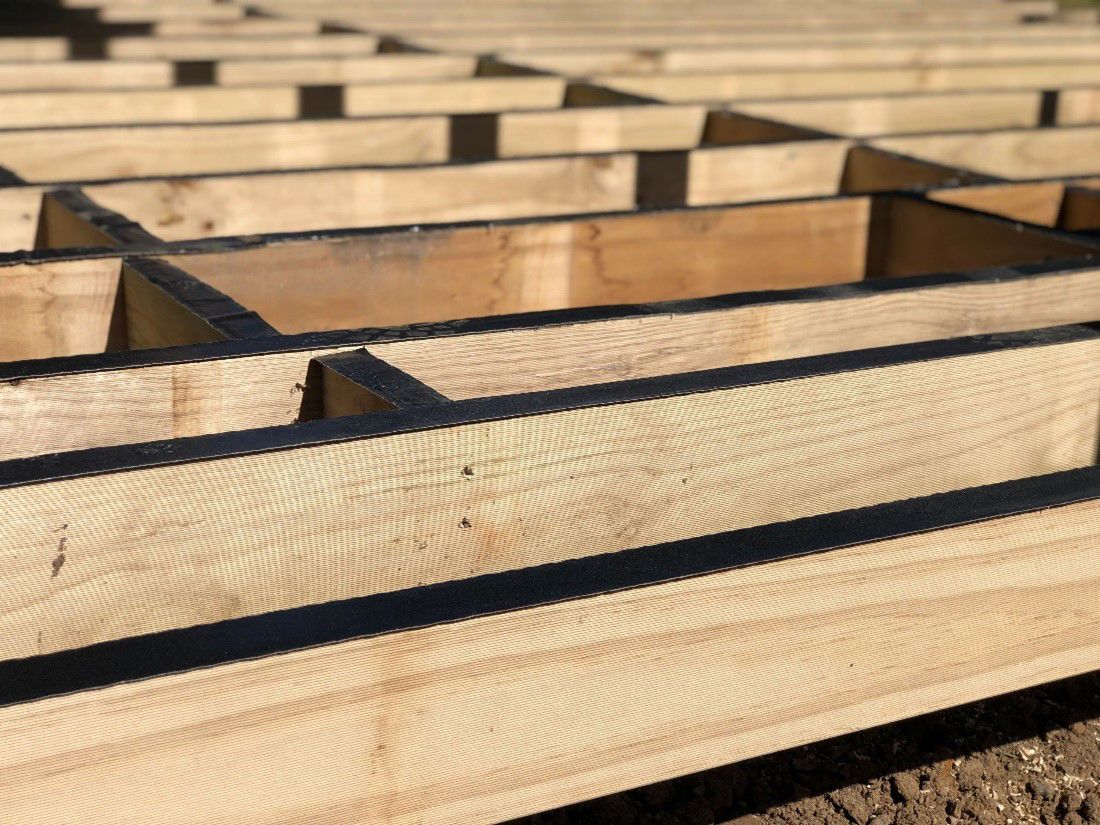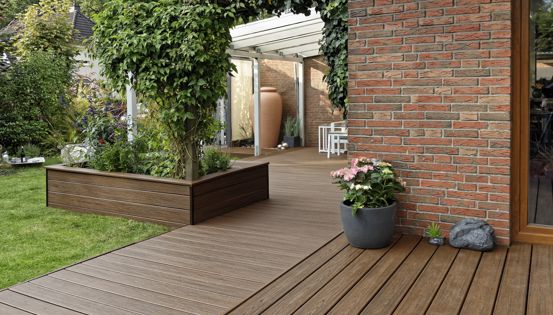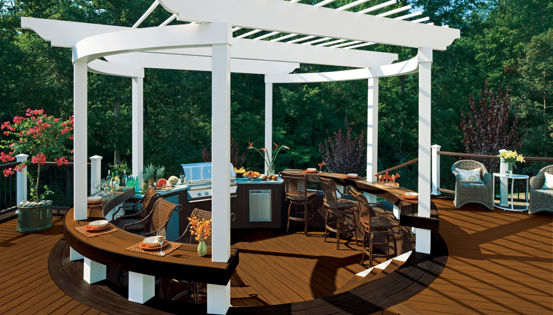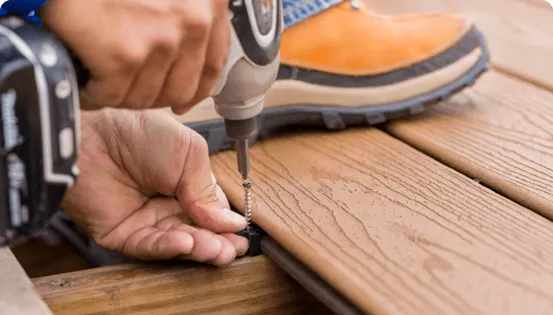If you’ve ever seen a piece of wood left out in the weather for any period of time, you know what happens: decay. Whether through wet rot, insect damage, or mildew, the fibers begin to break down.
That’s why you want to be sure the wood that supports your beautiful outdoor deck is solid and secure when you build it — and for the future. If not, your deck could become unsightly and unsafe. In fact, the average deck’s wooden substructure starts to split and rot around 8 to 10 years of age.
Rot Causes: Do not forget about the deck’s substructure
While homeowners often focus on the appearance of the top of their decks and preventing rot there, equal attention should be paid to the substructure. Even if you choose composite instead of wood decking for the top of your deck, it’s most likely that the supports beneath that flooring are made of wood. The substructure is the series of joists, beams, ledger board, and posts that hold up the decking boards, which comprise the floor of your deck.
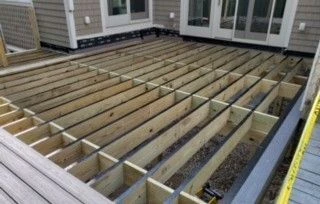
Over time, rain and snow falling between the spacing in your deck boards will create a wet substructure. Any moisture that stays on the wood over time, especially wet leaves or debris that fall between the decking boards, can cause damage. This moisture can attract fungi that break down the wood’s cell walls and feed on its nutrients. In addition, hot, humid areas make it even more difficult for the wood to dry out.
Rot can also begin if metal hardware and fasteners corrode, leaving the wood more vulnerable. Since the United States banned chromate copper arsenate, a preservative for treated lumber, companies commonly have used alkaline copper quaternary (ACQ) and copper azole (CA-B and CA-C). These higher concentrations of copper in treated lumber can be twice as corrosive as the zinc in galvanized fasteners.
Note that while you should seal any exposed wood from the weather, do not paint or seal the underside of your deck. You want that wood to be able to breathe and release moisture. Sealant or paint could trap water in the fibers.
If you want to create a finished look under your deck, consider installing a series of troughs and gutters that will pull away water from the deck’s underside. With such an under-deck drainage system in place, you can finish off the space beneath your two-story deck with a ceiling and have a completely waterproof space.
What can you do to prevent wood rot?
For decking boards, the answer is simple: use composite materials or seal the wood on treated timber regularly. However, protecting the wood beneath the decking boards is a little more challenging. Unless you extensively use the space under your deck, you may not even look at the joists and beams very often.
The best way to prevent rot is to ensure the wood never gets wet. This can most easily be done before the decking boards go down during construction. First, shield the tops of the joists and beams with waterproof flashing tape. There are commercial butyl tapes designed to be the right width for this purpose. With self-adhesive tape, the application is relatively easy.
Additionally, by applying joist flashing tape before screwing in hardware, you can create a barrier between the fasteners and preservatives in the wood that lessens corrosion. Thus, flashing tape protects in two ways, reducing corrosion and waterproofing the top of the wood beams and joists.
How can you check if your deck’s joists are rotting?
Once you build your deck, you’ll want to be sure it stays strong. So annually, you should inspect the wood on your deck. If you cannot do a visual check on your joists, enlist a builder or inspector to assess the condition.
When looking for damage, check for:
- Wood that is cracking
- Wood beginning to soften
- Boards that move or bounce
- Discolored wood
- Fungus growth
- Insect damage (little holes or signs of sawdust)
- Rusted fasteners or hardware
If you discover any damage, repair joist rot right away and if needed, enlist a contractor to help. Take care of your deck’s substructure, so you can enjoy your outdoor living space for many years to come.
